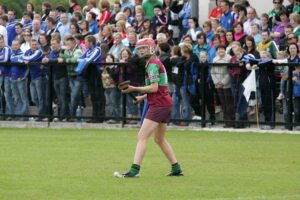This piece was commissioned and written for the Marketing Institute of Ireland Blog.
It is amazing what people think constitutes preparing material for publication. In this post, we look at what is involved in preparing materials for print. We start with how to plan ahead by writing a brief, commissioning the design, and assembling your copy and photographs. Plus what a designer wants but rarely gets.
These tips and suggestions are as applicable to new media solutions as they are to traditional printed media.
Planning
The production of a printed brochure is the sort of task that can assume all sorts of significance, sometimes it can be a case of too many cooks. Other times, if you are inexperienced and left on your own, it can be fraught.
The key to effective publications is good planning, right from the very start. So you start with the date you need it and work back. If you don’t have a deadline date. . . create one! From there you can start to work out your critical path.
Engage a Designer if You Haven’t Already Got One
At an early stage, involve a designer. If you already have a retained design house, speak to them.
Alternatively send out a sample spec of documents to get an idea of costs from three or four designers and from there, pick the one that you think you can work with. Have a look at their portfolio. Ask friends. You want an agency or designer with whom you can build a relationship based on trust. Over time they should become an extension of your business.
The Written Brief
The brief’s purpose is to ensure everyone has a clear understanding of what you are trying to achieve. It provides a good reference point as the project develops to ensure people haven’t gone off at a tangent.
The brief must comprise a complete description of the project — what you are trying to do; why it is needed; what the desired outcome is; who is the target audience; and who are the key stakeholders.
Get clear agreement in-house on what it is that you are trying to achieve. This may be an ongoing process with some to-ing and fro-ing with senior colleagues, but you are aiming to achieve a written brief.
Your written brief should cover the following areas:
- the target audience
- the call to action
- quantity required and how they will be distributed
- the deadline
- budget
- delivery details
- any marketing communications issues you are trying to address
- any ideas on colour
- use of images, i.e. photography, illustration
- cover design ideas
- printing and format specifications
- how the material will be supplied, for example in Microsoft Word
You should also include any guidelines on the use of your logo, your previous materials and if you have a sample of another design, include it.
Give the Designer Final Edited Copy
Once you have your designer onboard and they have received your brief you will need to source your materials in-house and get organised.
Design layout of a document should only begin after copy has been finalised, copy-edited and read in-house.
Yes, the development of design concepts can begin while the client is still assembling copy, but once layout starts any changes can mean effectively starting again. That in turn will add to the costs.
You should avoid giving copy to your designer in batches. Even in big jobs it is better, through good project management, to be in a position to hand over the entire copy file in one go, along with all imagery.
This is what a designer dreams of but rarely gets:
- Everything up front, all copy and images i.e. nothing to follow.
- Final clean copy. It will have already been copy-checked in-house and will require little further editing at proof.
- Clearly marked on the copy will be the positioning of all the images.
- A file of photographs/images cross-referenced to the place they appear in the copy as per the note above.
- Captions for all photographs prepared to a standardised format.
- Contact details – accurate and up to date, address, email, phone etc.
Editing and Proofreading
There are two distinct stages in the production process that are sometimes confused – editing/copy editing and proofreading.
Editing is the work that is done in-house before anything is sent to the designer. Good editing will result in final copy that is ready for submission to the designer.
Thereafter you are into the realm of proofreading, the process by which the designer provides you with made up pages and you read them and return them corrected.
The designer will need one person, one point of contact, with whom they liaise. That’s you! You will need to be available to provide feedback on design, check and proof read design layouts and check off proofs as they are supplied.
You alone should have the authority and responsibility to make decisions about layout and copy. Arriving at a situation where changes are being made by people who were not involved in the earlier design process can be catastrophic and costly.
By all means circulate the material in house but as the project manager/editor/copy editor you need to be responsible for assimilating internal comments and feedback and explaining that you are working to an agreed brief.
Note that the author of the material is not necessarily the best person to proofread. Not least because they can often get precious about their beloved piece of writing!
As the job proceeds, someone needs to take responsibility for proofing the job and communicating amendments to the designer. Proofreading is a different a set of skills distinct from those required for editing documents.
Personally, I like to use Adobe Acrobat for all proofing work between myself and my designer. The built in editing and commenting tools are simple and easy to use.

